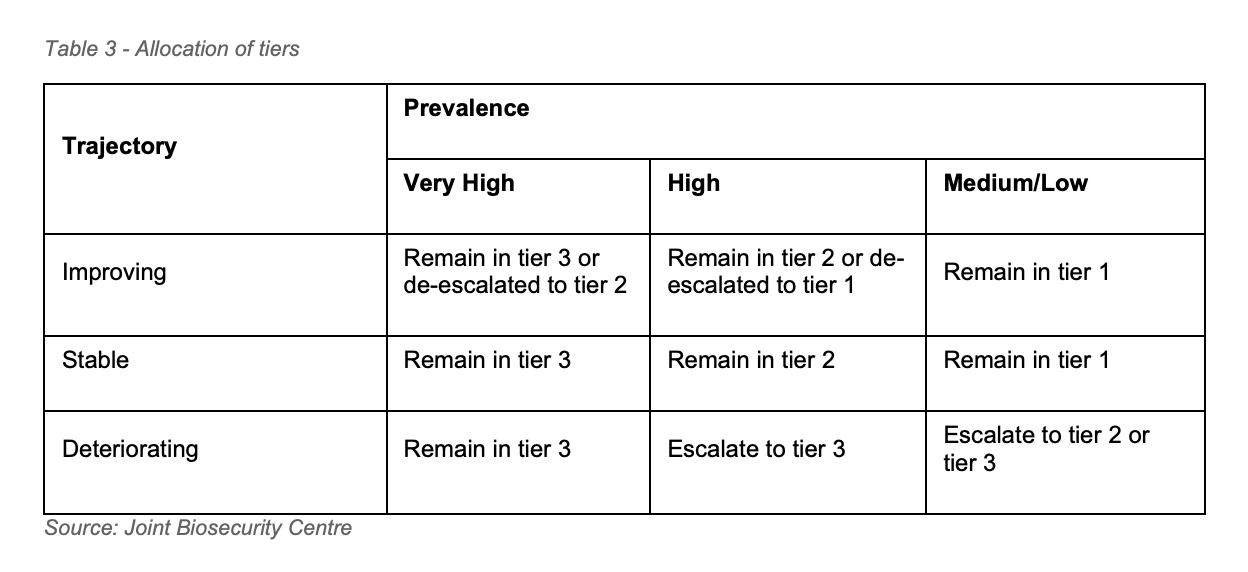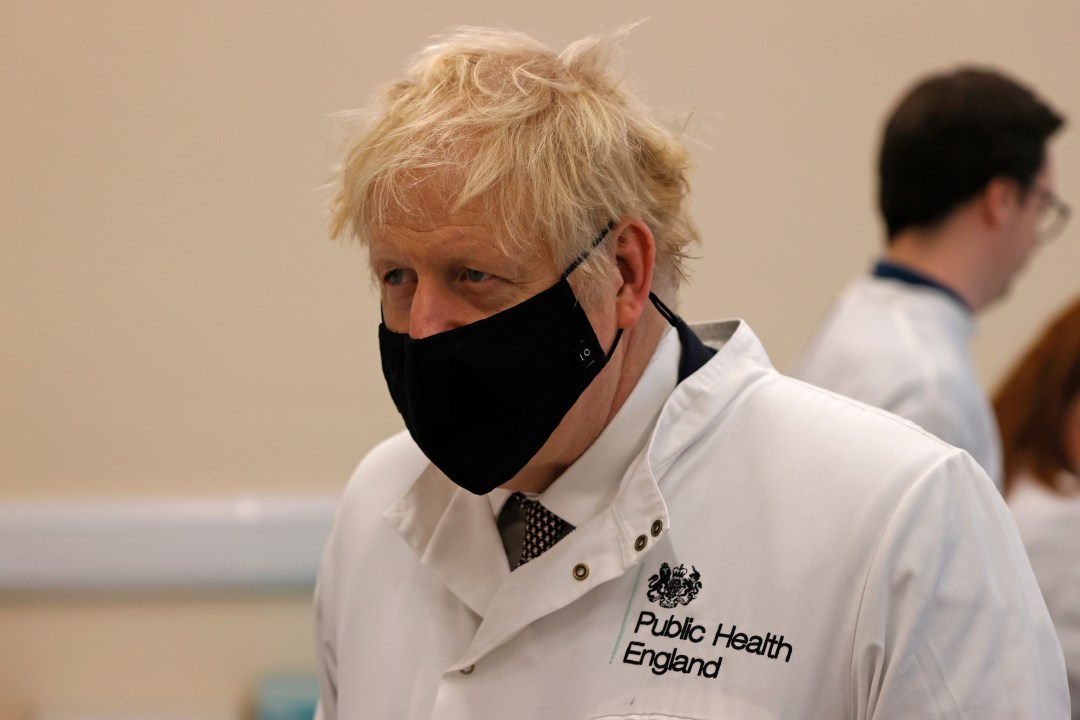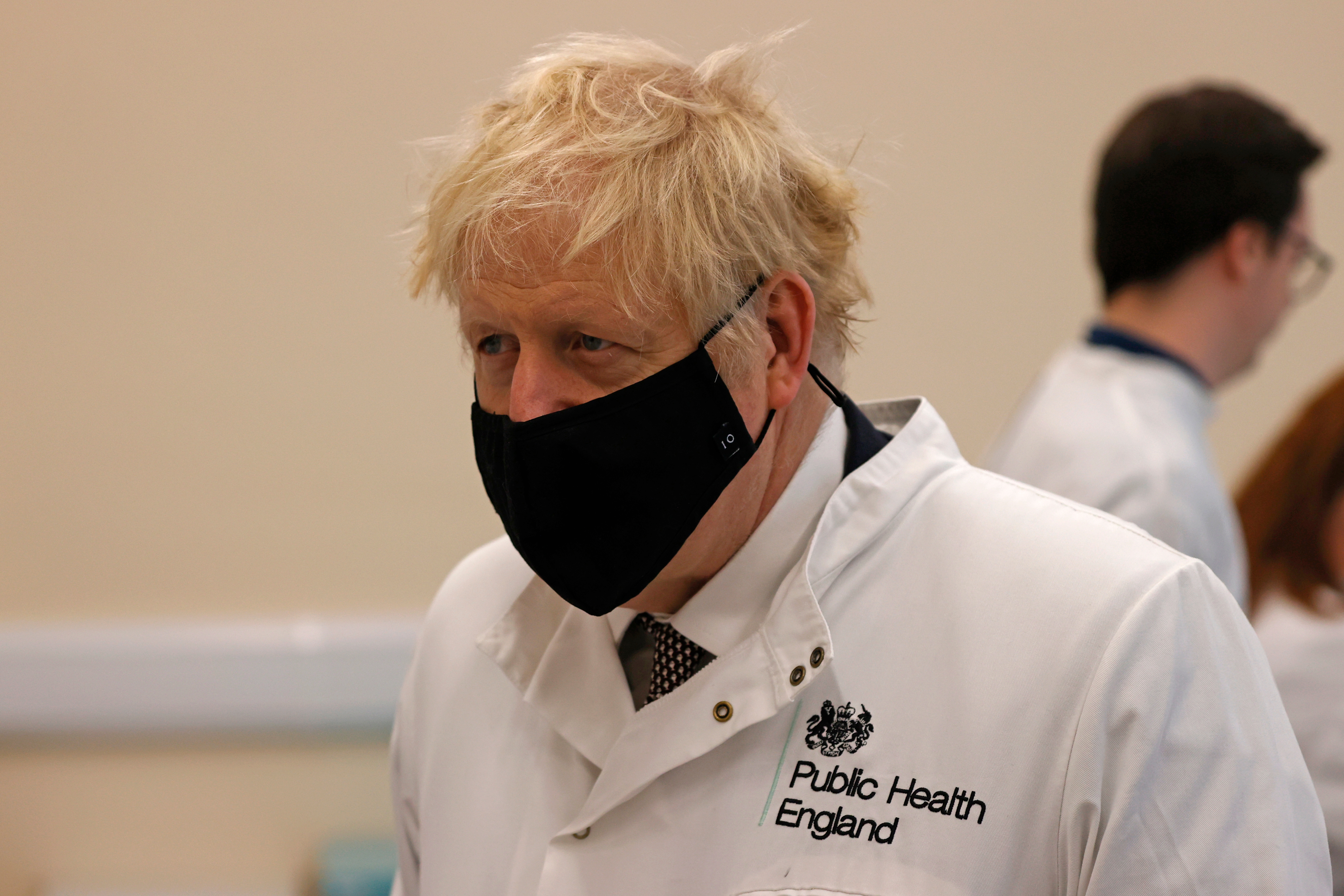In an attempt to win tomorrow’s vote on the new tier system — without relying on Labour’s support — Boris Johnson promised to publish analysis of the health, social and economic impact that the new tier system would have on the nation. But potential rebels are unlikely to be satisfied with the resulting document, published earlier this afternoon.
The intention was to show sceptical MPs that the government is seriously weighing up the trade-offs between the effects of Covid and the effects of stopping its spread. But it did not include a rigorous economic analysis of the tier system: in fact, it provided no cost-benefit analysis of any specific restriction.
Instead of estimating the impact of the tiers, the document doubles down on claims that such an exercise would essentially be impossible:
Due to the range of factors that need to be considered, and that in many cases are difficult to estimate — including how the virus would have evolved in different scenarios — any attempt to estimate the specific economic impacts of precise changes to individual restrictions for a defined period of time would be subject to such wide uncertainty as to not be meaningful for precise policy making.
It is difficult to see how this appeases the MPs who are driven by economic concerns
The ‘uncertainties’ laid out in the document include unknowns around ‘the path of the virus in the UK, including the effectiveness of and compliance with restrictions across the four nations’ and ‘the path of the virus globally and the approach to restrictions in other countries’. This was a similar line of defence used by the Treasury at the beginning of the month when its chief economist admitted the department had not done its own assessments of lockdown measures. Chair of the Treasury select committee Mel Stride noted at the time that ‘epidemiological analysis’ — i.e. predicting the spread of the virus — also suffered from similar unknown factors. But the government is still clearly attempting to make those predictions.
Today confirms these assessments still have not been carried out. Instead of running and publishing scenarios around the restrictions on hospitality or the updated 11pm curfew, the government seems to have recycled previously published data, relying heavily on the new economic scenarios laid out by the Office for Budget Responsibility (OBR) for last week’s spending review. In the section detailing the economic impact of the tier system, the new document re-hashes the OBR figures, highlighting its central scenario that shows a fall in economic output of 11.3 per cent, and a long road to recovery, finally achieved in Q4 of 2022.
The analysis itself starts to ask some of the questions that MPs expected to be answered in its publication, noting that the central scenario assumes tier 3 restrictions in their previous – and less strict – form. It does not, however, go on to update these forecasts by factoring the new rules:
To the extent that average restrictions proposed by the government and the devolved authorities in the UK are [now] stricter than [the previous rules], the associated short-term economic costs are likely to be greater than forecast in this scenario. Equally, to the extent that average restrictions proposed by the government and the devolved administrations are less strict than this, the associated short-term economic costs may be less than forecast in this scenario.
As to what those ‘associated costs’ might be, the document is silent. The assessment generalises by stating the ‘profound effect’ Covid has had on the economy — but that claim does not come from a new analysis. It is a statement that comes from previous work of other institutions and independent forecasters, and still does not address the question it was tasked with answering: what will the costs of tier restrictions be to Britain’s economy?
Without a detailed analysis of the cost of these restrictions, it is likely that MPs will be even more weary of seeing their region placed in tier 3. Despite the Prime Minister’s promise that “Your Tier is not your destiny” – implying there is a way to move down the tier ladder – that roadmap was also not published today. Instead, the assessment includes a chart based on ‘principles’, which provide no meaningful insight as to the infection or hospitalisation targets a region must meet to be moved down a tier.

It is difficult to see how this appeases the MPs who are driven by economic concerns: especially when it raises the same questions they have done, instead of making an attempt at answering them.








Comments